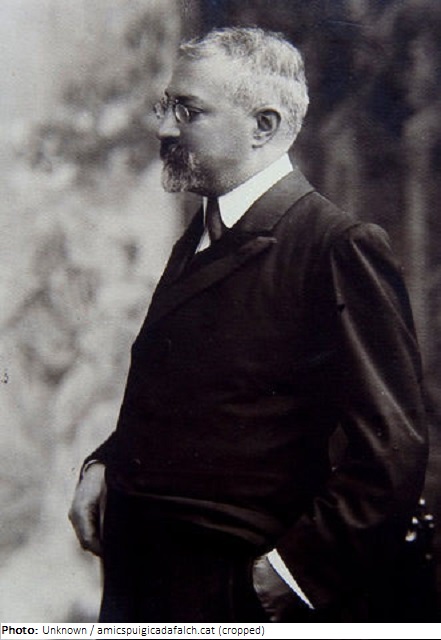José Puig

Biographical information
| Roles | Referee |
|---|---|
| Sex | Male |
| Full name | José•Puig y Cadafalch |
| Used name | José•Puig |
| Other names | Josep Puig i Cadafalch |
| Born | 17 October 1867 in Mataró, Barcelona (ESP) |
| Died | 23 December 1956 (aged 89 years 2 months 6 days) in Barcelona, Barcelona (ESP) |
| NOC |  Spain Spain |
Biography
José Puig y Cadafalch was a Catalan architect, urban planner, art historian, and politician. He studied first at the Escola Tècnica Superior d’Arquitectura, then at the University of Barcelona and the Complutense University of Madrid. He took degrees in mathematics and physics, and in 1891 in architecture, the latter at the Escola Tècnica, to which he returned once more as a lecturer in 1901. In 1892, he became the municipal architect of his hometown Mataró and eventually settled in Barcelona as a freelance architect in 1896.
Even as a student, Puig was committed as a Catalan nationalist and opponent of the Spanish central state. For the conservative “Lliga Regionalista” party, he was a Barcelona city councilor (1901-05), a deputy to the Spanish Cortes in Madrid (1907-09), a Barcelona provincial deputy (1913-23), and finally president of the “Mancomunitat de Catalunya” (Commonwealth of Catalonia, 1917-23). Especially in the last position, he was committed to urban development, educational projects, and technical and social progress.
Early on, Puig took an interest in the architectural and cultural heritage of Catalonia and restored numerous historic buildings. From 1905-13 he was a professor at the unofficial Catalan University. He became an internationally renowned art historian with the publication of the three-volume “L’arquitecture romànica a Catalunya”. He traveled to almost all the countries of Europe and to the Near East, where he carried out excavations in Susa/Persia in 1925. During the dictatorship of Primo de Rivera (1923-30), when was deprived of all public commissions, he wrote his paper “La geografía i els origens del primer art romànic” (Geography and the origins of early Romanesque art). In 1936, revolution and civil war forced him into exile in Saint Michel-de-Cuxà, Paris, and Andorra. A professional ban was imposed on him in 1941. When he finally returned to Spain in 1947, the Franco regime only allowed him to renovate and restore historic buildings.
Puig’s work was based on his engagement with the Catalan architectural heritage. Together with Antoni Gaudí (1852-1926) and Lluís Domènech i Montaner (1850-1923), Puig is one of the most important representatives of Catalan Modernism. His work is divided into three phases: feudal, rationalist, and monumental. These are characterized by down-to-earth, representative residential buildings for the upper middle classes until about 1900, by small houses in the verdancy for the educated middle classes until about 1913, and finally by metropolitan architecture reminiscent of American residential and commercial buildings. With the Casa Amatller, Puig realized his first metropolitan project and a masterpiece in 1899-1900. In 1901, he built the detached Casa Muntadas in the style of the country houses of the Catalan aristocracy. In 1913-15, he developed an overall concept for the exhibition grounds on the northern slope of Montjuïc mountain. His only attempt at modern design remains the small Hotel Levante in Llafranc/Girona in 1936.
Puig received honorary doctorates from the universities of Freiburg im Breisgau, Sorbonne/Paris, Barcelona, and Toulouse. His name was added handwritten to the list of members of the jury in the “Contests of Art” but is not listed in the Official Report.
Referee
| Games | Sport (Discipline) / Event | NOC / Team | Phase | Unit | Role | As | |
|---|---|---|---|---|---|---|---|
| 1924 Summer Olympics | Art Competitions |  ESP ESP |
José Puig | ||||
| Architecture, Open (Olympic) | Final Standings | Judge |
List mentions
- Listed in Olympians Who Were Members of National Legislatures (Deputy to the Spanish Cortes in Madrid (1907-09))